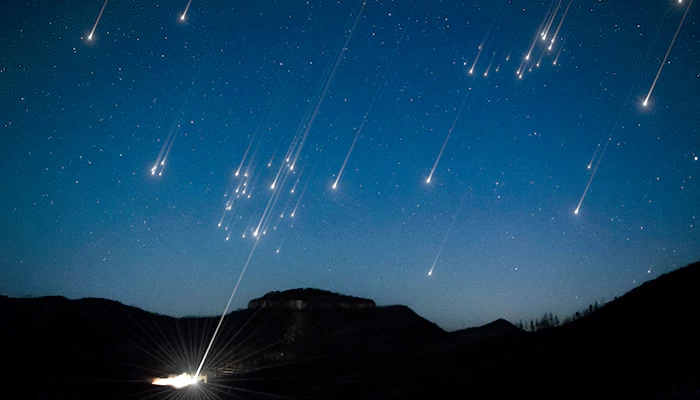The Science Behind the Spectacular Geminids Meteor Shower
Geminids can come up with about 120-130 meteors per hour, that is, approximately two per minute, under optimal conditions, and they are intensifying with each year.
- Sakshi Agrawal
- 05 September, 2024
- 2 mins ago

The Science Behind the Spectacular Geminids Meteor Shower
Geminids can come up with about 120-130 meteors per hour, that is, approximately two per minute, under optimal conditions, and they are intensifying with each year.
Very recently from within the first-days till about a fortnight, the cold dark December nights came alive, like each year, with a scintillating celestial display. The Geminids meteor shower, which usually occurs between Dec 4 to Dec 20 annually, with its potency peaking mid-mark — around December 13 and 14, is unequivocally considered the best annual meteor shower. Observed for the very first time, in 1862, it is also considered the most consistent and active among all the meteor showers.
Incidentally, it is generally followed by the Ursids meteor shower, which is relatively a smaller scale exhibition. One can understand the intensity of the Geminids in comparison to that of the Ursids. In the northern hemisphere, which provides the clearest sightings, Geminids can come up with about 120-130 meteors per hour, that is, approximately two per minute, under optimal conditions, whereas Ursids can barely muster about 5-10 meteors in the same time period. The other interesting bit about their appearances is that the Geminids are revving up their strength every year.
Why are they known as The Geminids?
Since meteors come from one particular direction, it’s a common astronomical practice naming them in accordance with the celestial point in the sky from which the paths of meteors radiate, that is, appear to originate. Technically, that point is known as a radiant. In this case, it’s the constellation Gemini, which is the radiant, hence the appellation.

What Is So Unique About Them?
All meteors originate from a comet. Only two are exceptions — one is Quadrantids, and the other one is The Geminids. The origins of the Geminids is traced to the object 3200 Phaethon, which the meteor scientists consider to be a Palladian asteroid with a ‘rock comet’ orbit. Discovered on October 11, 1983, hence its provisional nomenclature, 1983 TB, this asteroid, which is over 5 km (3.6 mi)
in diameter is named after the son of Greek Sun god, Helios, because, its orbit brings it closest to the Sun than any other asteroid.
Are They Very Difficult To See?
The relative medium speed of these shooting meteors of the Geminids shower, which is about 35 km/s (78,000 mph) means that they become fairly easy to spot in a dark sky. They are visible probably because they generally tend to disintegrate while at 39 km (24 miles). Otherwise, compared for speed, these showers travel 250 times swifter than the fastest car in the world and about 40 times quicker than a speeding bullet.
Darker skies and less light-polluted sites are more conducive to its visibility.










